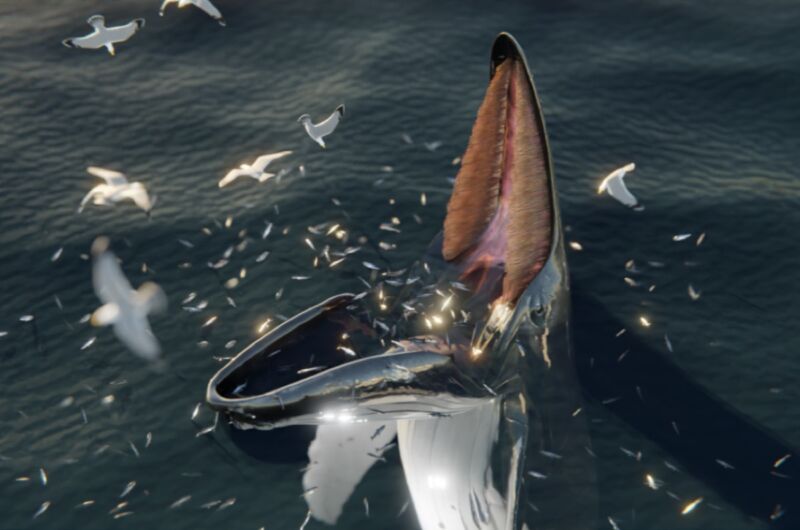Medieval manuscripts may have described “new” whale feeding trick centuries ago

Enlarge / A digital reconstruction of a humpback whale engaged in trap feeding. (credit: John McCarthy, Flinders University)
About 10 years ago, marine biologists witnessed two different species of whales in different geographic locations engaged in a novel feeding strategy. The whales would position themselves at the water's surface and stay motionless with their mouths wide open. Fish would swim into their mouths, and the whales would snap their jaws and swallow. It's been dubbed trap feeding, or tread-water feeding. A clip of whales engaged in trap feeding even went viral on Instagram in 2021.
Yet this feeding strategy might not be as recent as scientists initially thought. Researchers at Flinders University in Australia have found striking descriptions of what sounds a lot like trap feeding in Old Norse descriptions of the behavior of a sea creature called the hafgufa, according to a new paper published in the journal Marine Mammal Science. That creature, in turn, can be traced back to medieval bestiaries as a type of whale called aspidochelone, first mentioned in a 2nd-century CE Alexandrian manuscript called the Physiologus.
It's exciting because the question of how long whales have used this technique is key to understanding a range of behavioral and even evolutionary questions," said co-author Erin Sebo, a medievalist at Flinders University. "Marine biologists had assumed there was no way of recovering this data but, using medieval manuscripts, we've been able to answer some of their questions."